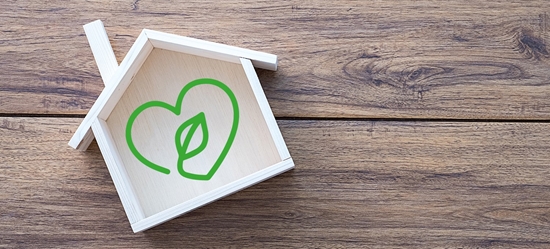Development of environmentally friendly wood compacts by TMU researchers
For the first time in the world, TMU researchers have succeeded in developing environmentally friendly wood compacts with the lowest permissible levels of formaldehyde (as carcinogens).

« One of the major challenges in the field of compact wood industry in the world is the release of formaldehyde (carcinogens) from wood products, in case of use. » said Dr. Ali Shalbafan, academic of department of wood and paper science. He also stated: « In this regard, the issue of the development and use of environmentally friendly formaldehyde-based adsorbents based on chitosan and its derivatives has been proposed by us. » According to Shalebafan, the release rate of formaldehyde from compacted wood made with ۱٪ (by weight of dry wood matter) of chitosan-based sorbents has reached the lowest permissible level in the world. Being Natural and environmentally friendly, biodegradable, abundant and available, and lack of reduction in physical and mechanical resistance of manufactured wood products are other prominent advantages of the developed adsorbents. Chitosan was used as environmentally friendly and bio-based scavenger for reducing the formaldehyde emission from medium density fiberboard. Using of chitosan powder showed better capacity of formaldehyde adsorption rather than the chitosan solution. Liquid ¹ ³ C-NMR showed that the free formaldehyde in urea formaldehyde adhesive having chitosan powder was drastically reduced. Additionally, the observed peak at ۱۵۵ ppm showed that that the chitosan powder was copolymerized with urea formaldehyde adhesive. Increasing the amount of chitosan powder was significantly reduced the emitted formaldehyde. It was shown that the formaldehyde adsorption of chitosan was strongly influenced by the pH value of adhesive composition. The pH value and the adhesive gel time tended to increase with addition of chitosan powder, due to the proton affinity of chitosan. The mechanical and physical properties of panels did not significantly change when the chitosan content as scavenger was raised up to ۳٪، while a formaldehyde emission class of wood level was achieved. It is supposed that the emission of formaldehyde might well increase again while the reactive sites of the chitosan added were already saturated with formaldehyde. Hence, performing of long-term formaldehyde emission is recommended for further analysis based on the obtained results in this study. It is worth mentioning that this research project has been carried out as a research activity at TMU and the results of the research have been registered and approved by the USPTO (United States Patent and Trademark Office). Numerous scientific articles, derived from research outputs, have been published in specialized journals and conferences of the wood industry (Journal of Adhesion and International Journal of Adhesion and Adhesives). In addition to Dr. Shalibafan, Hedi Hassan Nejad (MA student) and Dr. Mehdi Rahmani Nia (academic member of department of wood and paper science) are also contributors to this research project at the TMU's faculty of Natural Resources and Marine Sciences. Formaldehyde (systematic name methanal) is a naturally occurring organic compound with the formula CH2O (H− CHO). It is the simplest of the aldehydes (R− CHO). The common name of this substance comes from its similarity and relation to formic acid. In view of its widespread use, toxicity, and volatility, formaldehyde poses a significant danger to human health. In ۲۰۱۱، the US National Toxicology Program described formaldehyde as « known to be a human carcinogen» . The United States Patent and Trademark Office (USPTO) is an agency in the U. S. Department of Commerce that issues patents to inventors and businesses for their inventions, and trademark registration for product and intellectual property identification. Chitosan is a linear polysaccharide composed of randomly distributed β - (1→ ۴) -linked D-glucosamine (deacetylated unit) and N-acetyl-D-glucosamine (acetylated unit). It is made by treating the chitin shells of shrimp and other crustaceans with an alkaline substance, like sodium hydroxide. Chitosan has a number of commercial and possible biomedical uses. In industry, it can be used in a self-healing polyurethane paint coating.
